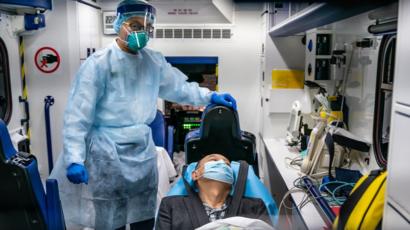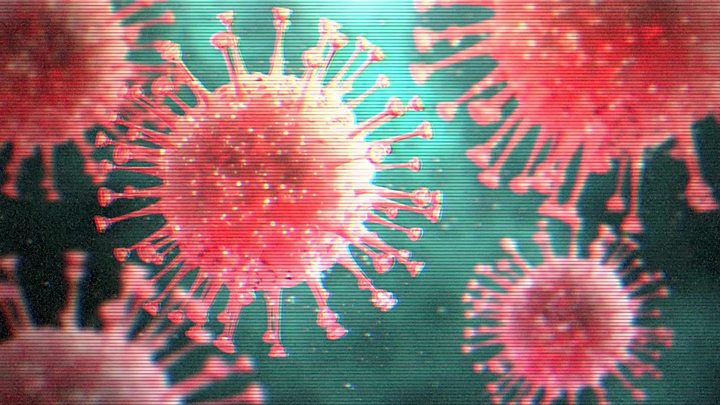Coronavirus: What it does to the body
By James Gallagher Health and science correspondent
Image copyright Getty Images
Fighting the new coronavirus has been a battle against the unknown for doctors.
How does it attack the body? What are the full range of symptoms? Who is more likely to be seriously ill or die? How do you treat it?
Now, an account by medics on the front line of this epidemic, at the Jinyintan Hospital, in Wuhan, is starting to provide answers.
A detailed analysis of the first 99 patients treated there has been
published in the Lancet medical journal.
Lung assault
All of the 99 patients taken to the hospital had pneumonia - their lungs were inflamed and the tiny sacs where oxygen moves from the air to the blood were filling with water.
Other symptoms were:
- 82 had fever
- 81 had a cough
- 31 had shortness of breath
- 11 had muscle ache
- nine had confusion
- eight had a headache
- five had a sore throat
First deaths
The first two patients to die were seemingly healthy, although they were long-term smokers and that would have weakened their lungs.
The first, a 61-year-old man, had severe pneumonia when he arrived at hospital.
He was in acute respiratory distress, meaning his lungs were unable to provide enough oxygen to his organs to keep his body alive.
Despite being put on a ventilator, his lungs failed and his heart stopped beating.
He died 11 days after he was admitted.
The second patient, a 69-year-old man, also had acute respiratory distress syndrome.
He was attached to an artificial lung or ECMO (extra-corporeal membrane oxygenation) machine but this wasn't enough.
He died of severe pneumonia and septic shock when his blood pressure collapsed.
At least 10% die
As of 25 January, of the 99 patients:
- 57 were still in hospital
- 31 had been discharged
- 11 had died
This does not mean the death rate of the disease is 11%, though, as some of those still in hospital may yet die and many others have such mild symptoms they do not end up in hospital.
Market workers
Live animals sold at the Huanan seafood market are thought to be the source of the infection, called 2019-nCoV.
And 49 out of the 99 patients had a direct connection to the market:
- 47 worked there, either as managers or manning the stalls
- two were shoppers who had only popped in
Middle-aged men worst affected
Most of the 99 patients were middle-aged, with an average age of 56 - and 67 of them were men.
However,
more recent figures suggest a more even gender split. The China Centers for Disease Control and Prevention said 1.2 men were infected for every 1.0 women.
There are two possible explanations for the difference:
- Men could be more likely to become severely ill and need hospital treatment
- Men, for social or cultural reasons, may have been more likely to be exposed to the virus at the beginning of the outbreak
Dr Li Zhang, at the hospital, says: "The reduced susceptibility of females to viral infections could be attributed to the protection from X chromosome and sex hormones, which play an important role in immunity."
And those who were already sick
Most of the 99 had other diseases that may have made them more vulnerable to the virus as a "result of the weaker immune functions of these patients":
- 40 had a weak heart or damaged blood vessels due to conditions including heart disease, heart failure and stroke
- A further 12 patients had diabetes
Follow James on Twitter.
Learn more about the new virus
Image copyright Getty
What are viruses? And how do they spread?
Have you been affected by any of the issues raised? You can share your experience by emailing [email protected].
Please include a contact number if you are willing to speak to a BBC journalist. You can also contact us in the following ways:





